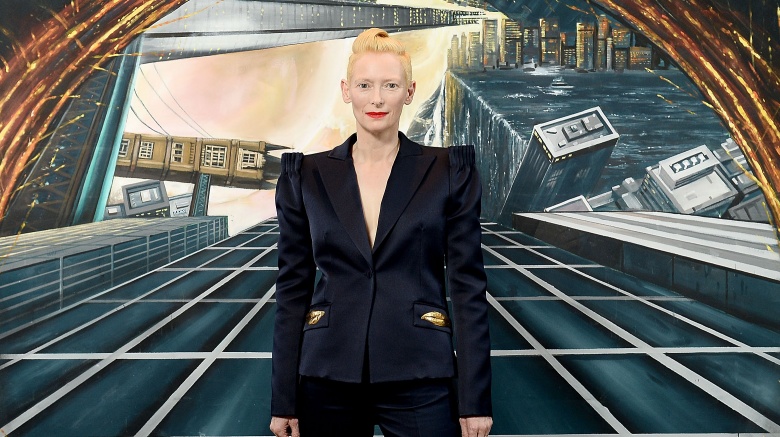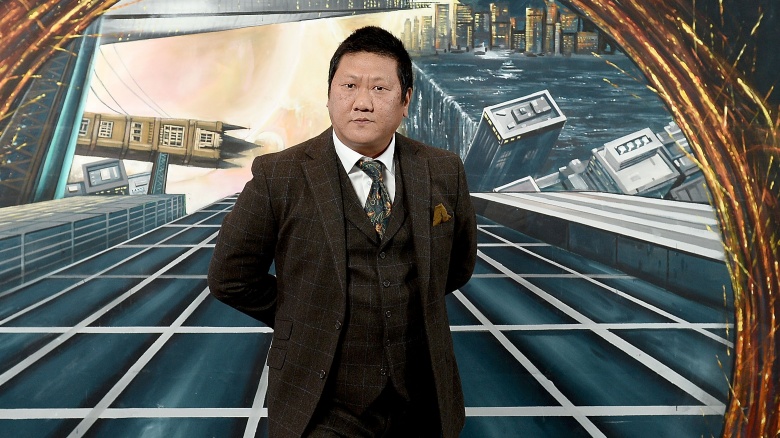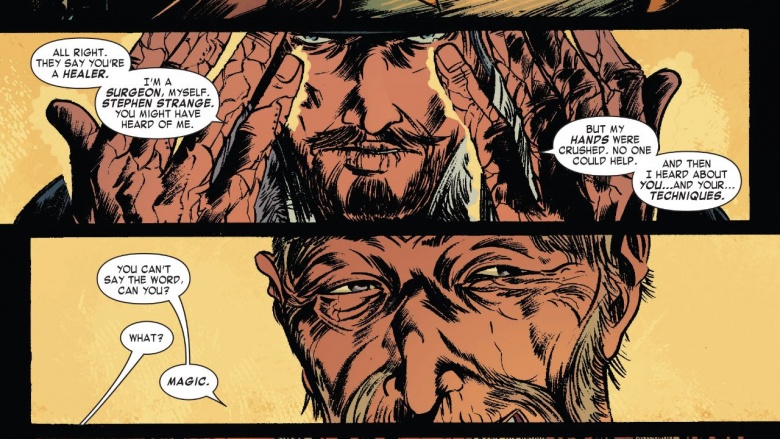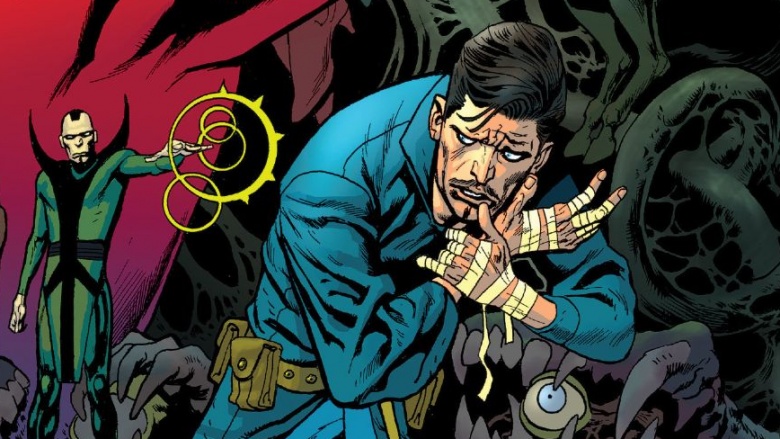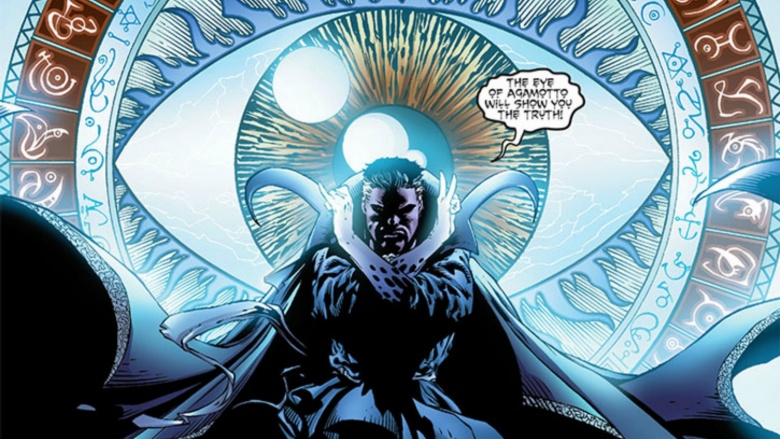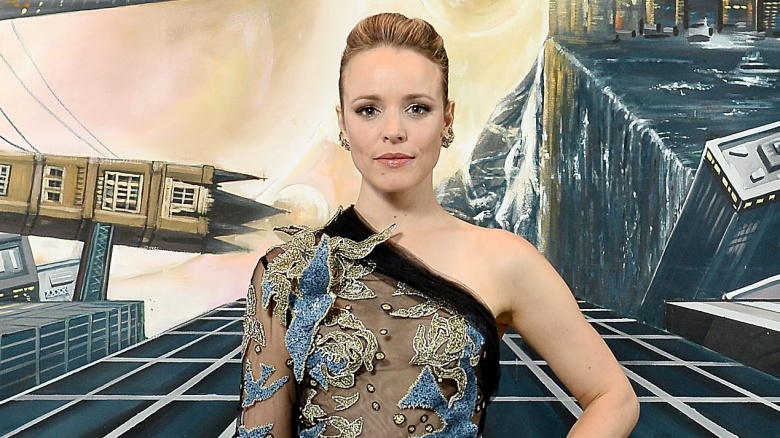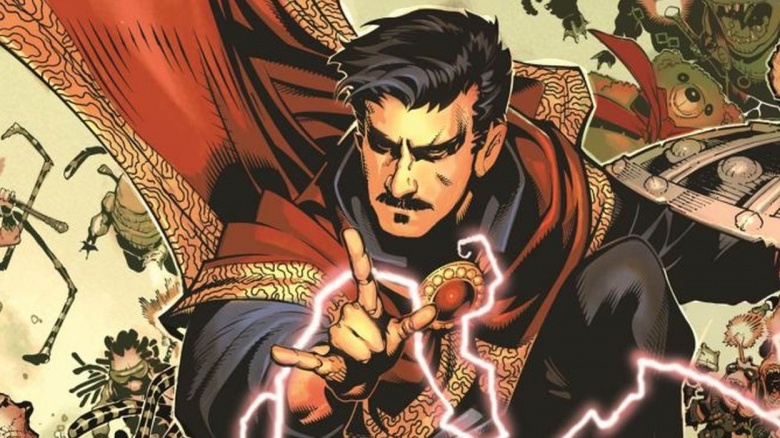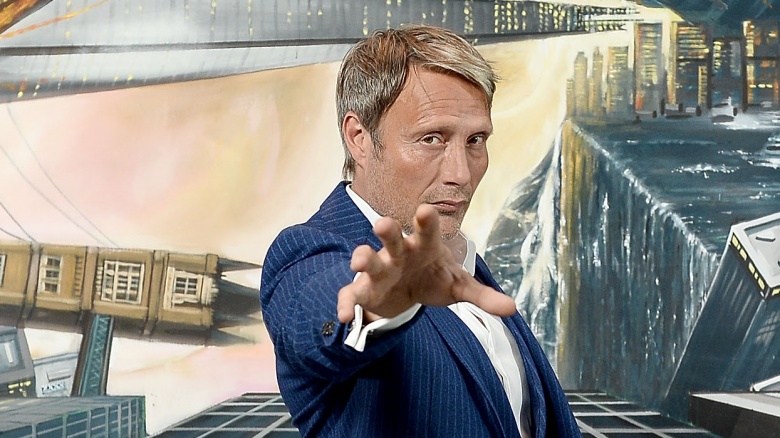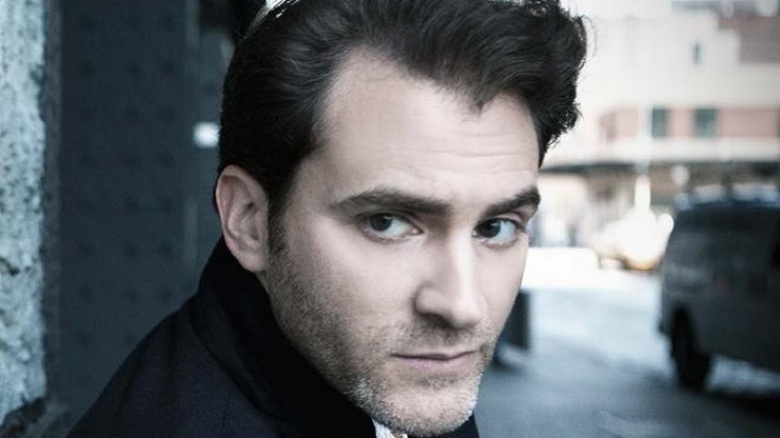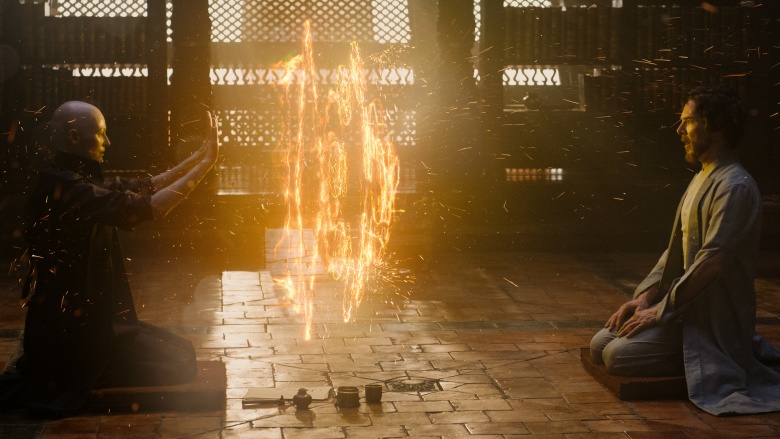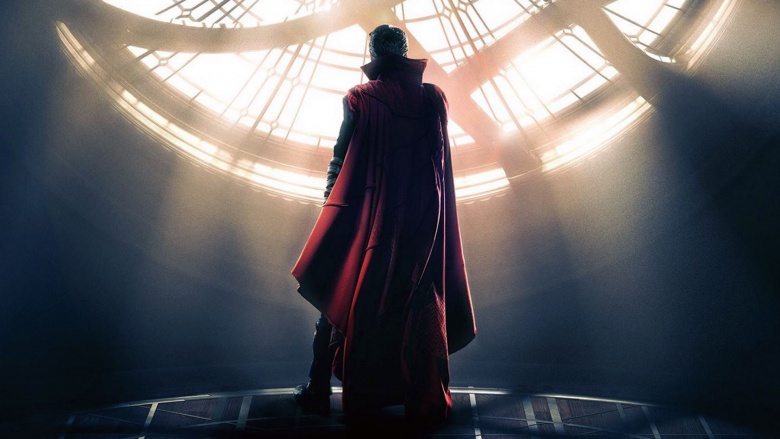How Doctor Strange Is Different In The Comics
In typical Marvel fashion, Doctor Strange retains the broad strokes of the comics character—a cocky surgeon who loses the ability to use his hands and turns to the mystical arts as an answer—while playing fast and loose with many of the original story elements in order to make the adaptation work. We've lined up some of the biggest differences for you here, but be warned: plenty of spoilers for the movie here, so unless you can mystically turn back time, proceed with caution.
The Ancient One is VERY different
For longtime Doctor Strange fans, perhaps the most notable deviation of the film from the comics was the character of the Ancient One, the magical guru who guides Stephen Strange from the world of medicine to the world of mysticism. In the comics, the character is portrayed as an elderly Tibetan man, while the movie went with...bald Tilda Swinton. This deviation is also notable because of the minor firestorm that erupted when Swinton's casting was announced, with some fans saying that Marvel was going out of their way to whitewash a prominent character. Marvel, however, insisted that the Ancient One is more of a title than a specific character, allowing hardcore comics fans to infer that Swinton's Ancient One is a person altogether different from her printed counterpart.
Interestingly, this might have been less of a controversy if not for Iron Man 3. That film promised to show us the Mandarin, Iron Man's primary comic book foe and a character of Chinese descent that was ultimately played by...Ben Kingsley. Between this and Swinton (and even the decision to keep the character of Iron Fist white), many wonder whether Marvel will continue to whitewash Asian characters.
Wong: more than a librarian
In the film, Wong serves as the librarian of the mystical school where Doctor Strange masters his magical powers. The character primarily serves as wry comic relief within the movie as Strange often tries—and fails—to make the character laugh, often by making pop culture references. In the comics, however, Wong plays a more vital role in the life of Stephen Strange as a loyal servant and guardian. While Wong's character did start out serving the Ancient One in the comics as well, his specific role was defined by the Ancient One as one of service. The movie deliberately changes this power dynamic, with Wong serving as a wise guardian of hidden knowledge who often criticizes Strange as an upstart pupil who is moving far too quickly with his magical studies.
It's worth noting that this change to Wong may have been politically motivated. Comics and other forms of genre entertainment have had a long and often ugly history of Asian characters serving as sidekicks and servants to white characters: we can see that in characters ranging from the Green Hornet to Indiana Jones. By giving Wong more agency and more voice, it helps set him on more of an equal footing with Strange, even if they do end up working together in the future.
Different death for the Ancient One
The Doctor Strange film presents the death of the Ancient One as something that another magical doctor—Doctor Who—might call a fixed point in time. That is, for all of her ability to alter the future for other people, she is unable to change her destiny to die after a battle with the villain Kaecilius, and Dr. Strange has an astral conversation with her spirit before she presumably passes on.
That death was different in the comics, with the Ancient One of the printed page dying after a battle with Shuma-Gorath, a villain who was inhabiting part of the Ancient One's mind; he commanded Strange to kill his body as a way of defeating his foe. Incidentally, the comic book incarnation of the Ancient One had a habit of both faking his death and continuing to talk with Strange, Obi-Wan style, after his body passed on, leaving many fans wondering if this movie was the last we'll see of Swinton's character.
Different origin for Baron Mordo
Just as comics fans were surprised to see the Ancient One as a white woman, they were surprised to see the character of Mordo by her side throughout the entirety of the movie. The Mordo of the comics is known as one of Doctor Strange's primary villains, and while he did serve as a disciple of the Ancient One (just as the film portrays), the comics portray a character doing so only to transmit magic he learned to a German mystic named Krowler. Krowler, incidentally, was serious business, playing a role in Hitler's rise to power. As that weird trivia may indicate, the Mordo of the comics is much older than the Mordo of the film seems to be. And while age may seem like less of a thing when magic is involved, the Mordo of the movie is specifically annoyed later that the Ancient One is seemingly hoarding magical energy to retain youth.
In the comics, Mordo is already an enemy of the Ancient One by the time Doctor Strange meets him. This means that the entirety of his plot in the movie is a major deviation from the comics, with the movie serving as a kind of alternative origin story for his future appearances as a cinematic supervillain. Weird fun fact: while the cinematic Mordo is very cagey about his background, the Mordo of the printed page is from Transylvania. He's not a vampire or anything, but it's fun to imagine how a stereotypical Count Dracula accent would add some pizzazz to his onscreen appearances.
The Eye of Agamotto
The key magical artifact in the movie is the Eye of Agamotto. It plays a major role in letting us see how far along Strange has come in his studies (with the interesting conceit in play that the relics themselves choose people who are ready for them), and it's the key to Strange's defeat of Dorammu, due to its ability to warp time and space. This is a major deviation from the comics: the Eye of the printed page has a number of powers, from boosting mental acuity to reading minds and providing a mystical Google Image Search of the past.
Why does the Eye of the movie have these nifty time abilities? This is tied to the other major deviation: the cinematic Eye of Amogatto is presented as an Infinity Stone—specifically, the Time Gem. If you don't already know, the Marvel Cinematic Universe is oh-so-slowly grinding towards a huge fight with the alien Thanos, previously glimpsed most fully in Guardians of the Galaxy. The Thanos of both the comics and the movies is obsessed with the Infinity Gauntlet, a kind of cosmic Power Glove that gets supercharged when it has all of the Infinity Stones in it. These stones are basically the frame of these movies, with powerful objects such as The Tesseract from The Avengers and the destructive purple orb from Guardians of the Galaxy. Long story not so short? The Eye needed to be made into one of the Infinity Stones to fit this narrative, and since Marvel is loosely adapting the kinds of stones from the comics—and because several are already accounted for—the Eye of Doctor Strange became the Time Gem (giving it those cool timey wimey-powers that the comic book Doctor Strange doesn't have), ensuring that we will see Strange and Thanos eventually crossing paths.
Doctor Palmer, Night Nurse no more
The character of Dr. Christine Palmer plays love interest (and often the voice of grounded sanity) for Dr. Strange throughout the movie. Nominally, she's based off a specific character from Marvel Comics, although they had to make more than a few adaptations...mostly because they'd already used her original concept for a completely different character (oops!).
In the comics, Christina is one of several characters who has assumed the Night Nurse identity. The Night Nurse is someone who specializes in treating superheroes, and she does so via her special clinic while both respecting their secret identities and not billing those who can't really pay for a real doctor (perpetually poor Peter Parker is always grateful for this). If some of this sounds like you've already seen it, you have: Rosario Dawson plays the completely different character Claire Temple on the Netflix side of the MCU, and she's helped patch up Daredevil, Jessica Jones, and Luke Cage. In fact, she's even jokingly referred to as "The Night Nurse" in the Luke Cage series. Hence, when we see Christina Palmer in Doctor Strange, she's altered—a doctor and not a nurse, and a very reluctant initiate into both superhero medicine and Dr. Strange (who, in the comics, had a relationship not with Christina Palmer but with Linda Carter—no relation to Wonder Woman—who was the most prolific of the Night Nurses).
The Cloak should have no personality
One of the unexpected sources of humor in the Doctor Strange movie is his Cloak of Levitation. Narratively, this is another relic that, like the Eye of Agamotto, helps sell us on the idea that Strange is ready to take things to the next level in his training. In practice, the cloak also lends itself to a number of sight gags because it seemingly has a mind of its own: it will pull Strange away from his intended direction in order to show him a new weapon, and even tries to mother him by wiping at some blood and dirt on his face.
The cloak in the comics plays a similar role, granting Strange the ability to fly. One key difference, though: in the comics, the cloak does not have a mind of its own. It is instead activated by the will and commands of others. And while someone may be tempted to read the cloak in the movie as responding to Strange's own will, some of the humor in the movie comes from the cloak explicitly acting against the fledgling sorcerer's desires.
Kaecilius
Historically, the Marvel Cinematic Universe has had a villain problem. Broadly speaking, any bad guy not named "Loki" isn't really developed that well—characters end up being all style and no substance (hello, Ronan!) or all plot device and nothing else, (hello, Zemo!). There's occasionally another issue, too: Marvel takes some of their characters from the comics and mashes them together to create a new villain. For instance, in Iron Man 2, we have a character with the real name of one villain (Ivan Vanko, who was the Crimson Dynamo in the comics) and the appearance, alter ego, and powers of another villain (Whiplash).
This happens again with the villain in Doctor Strange, Kaecilius. The makers of the movie went out of their way to get an obscure bad guy—little more than a footnote in comics history—as their man heavy. Why? Partly to avoid fan backlash: imagine all the pressure when you're adopting a famously beloved villain for the screen (just ask Jared Leto). Marvel sidestepped this by picking an obscure henchman to adapt—no one really cares about the original character, so any changes they make would be viewed as improvements. Even better, most of his character beats (former student of the Ancient One, worshipper of Dorammu, etc.) come from other comics characters such as the original Baron Mordo. Another reason for the change is that it allows them some clever sidestepping: in the comics,Kaecilius was actually a henchman of Mordo, whereas in the movie, we see Mordo side-by-side with Doctor Strange fighting this villain. This means that the final post-credits stinger—showing us Mordo going pretty damn evil—can come as a surprise to comics fans and casual viewers alike.
Nicodemus West: from rival to partner
Nicodemus West plays a very minor role in the movie. In fact, you'd be hard-pressed to even remember the character's name after your first viewing. This is the fellow doctor that Strange humiliates—the one who prematurely diagnoses a man as dead in the opening act. In the film, he is nothing but a mirror for Dr. Strange's character arc: Strange starts as an arrogant surgeon who sees himself as superior to everyone, and especially to Dr. West. Near the end, though, Strange entrusts Dr. West to operate on the Ancient One, realizing that his still-broken body is no longer up to the task.
In the comics, Dr. West has some very different adventures. The printed page makes it much clearer that West is the one who operates on Strange, leaving our not-yet-heroic doctor unable to operate. The comic West feels so much guilt over this that—ironically—he ends up doing his own Tibetan mystical training with the Ancient One. However, he leaves before his studies are complete, and his powers are usually used for indirect evil (killing someone when he tries to heal them) or direct evil (fighting Doctor Strange).
Accelerated training
The final deviation from the comic is one that's easy to overlook on your first viewing, even though the movie cheekily calls it out. In the comics, Strange has to learn and train for years before taking up the mantle of the Sorcerer Supreme. The movie obliquely references the length of time that training should take when the Ancient One compares it to Dr. Strange's medical training (becoming a surgeon takes about 14 years, incidentally). In the movie, all of this seemingly happens over a period of 18 months.
How can we tell? Blink and you'll miss it: right before his car accident, Doctor Strange is listening to descriptions of potential patients. One of them is described as an Air Force Colonel that was injured in an experimental suit of armor. This very much seems to be a reference to James Rhodes, Iron Man's best friend who was severely wounded in Captain America: Civil War and would likely need some of the special spinal surgery that was Strange's specialty. Interestingly, though, the director claimed via Reddit that this was NOT meant to be a reference to Rhodes, leading some to speculate that it may reference one of the poor people severely injured by Justin Hammer's incompetent Iron Man knockoffs back in Iron Man 2. Additionally, another blink-and-you'll-miss-it moment is seeing the Avengers Tower in the New York City skyline. This tells us that, at bare minimum, this is all occurring over a four-year period (Avengers came out in 2012), meaning that Dr. Strange took over the post of a timeless, godlike being in about the time it takes to earn a bachelor's degree (which is made funnier considering Strange's use of "bachelor's degree" as a cruel epithet at one point).
A kind of magic
Despite these numerous differences, Doctor Strange really works as a movie. The protagonist is engaging and has an interesting arc, and the villain is visually stylish (if narratively empty). Perhaps most impressively, they made the movie feel unique when it could have easily come across as "Iron Man, but with MAGIC." Considering the promises of both the mid-credits and post-credits stingers, it looks like we'll be enjoying the magic of Benedict Cumberbatch (a Tumblr page just waiting to happen) for a good, long while.

